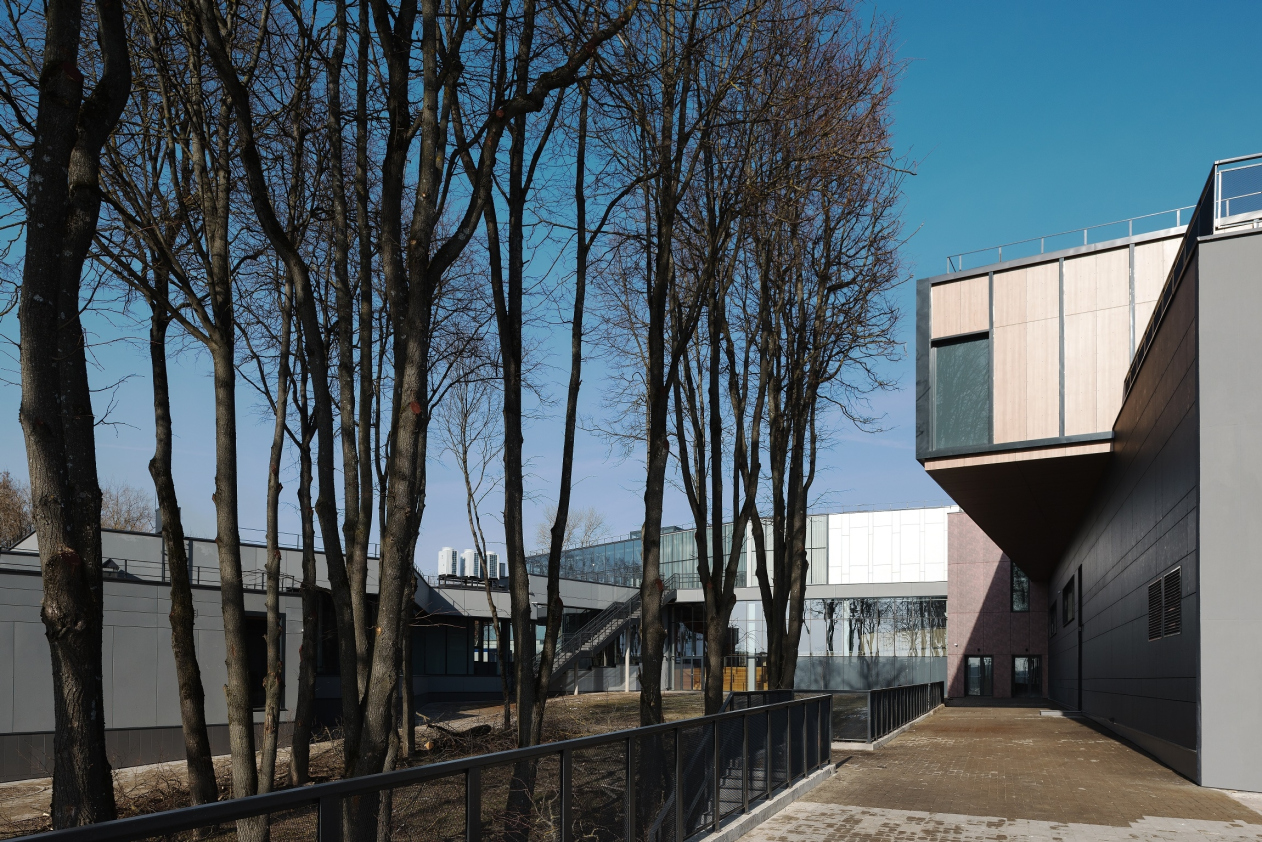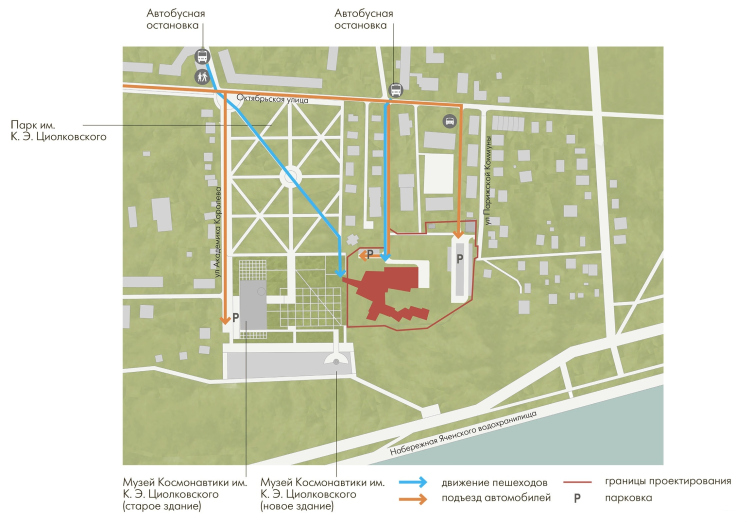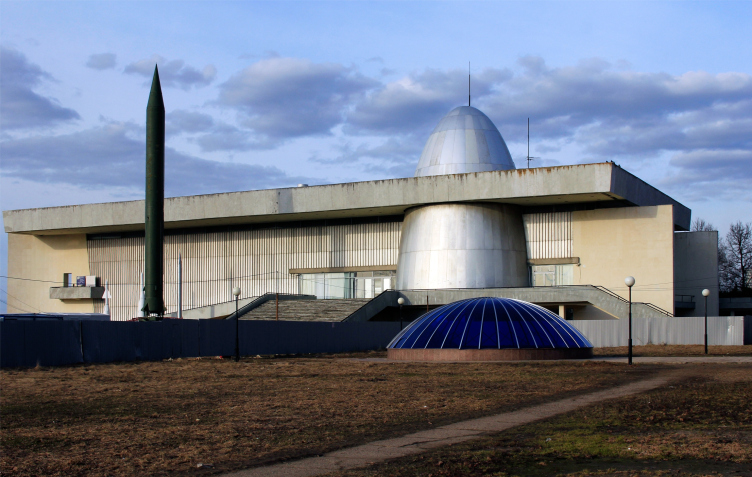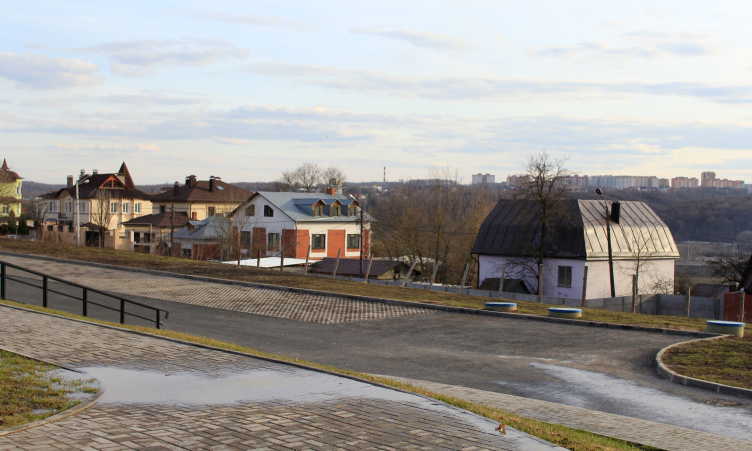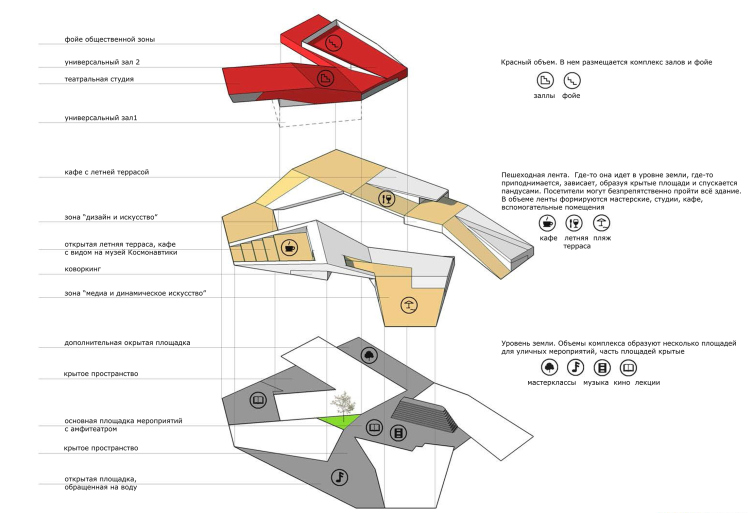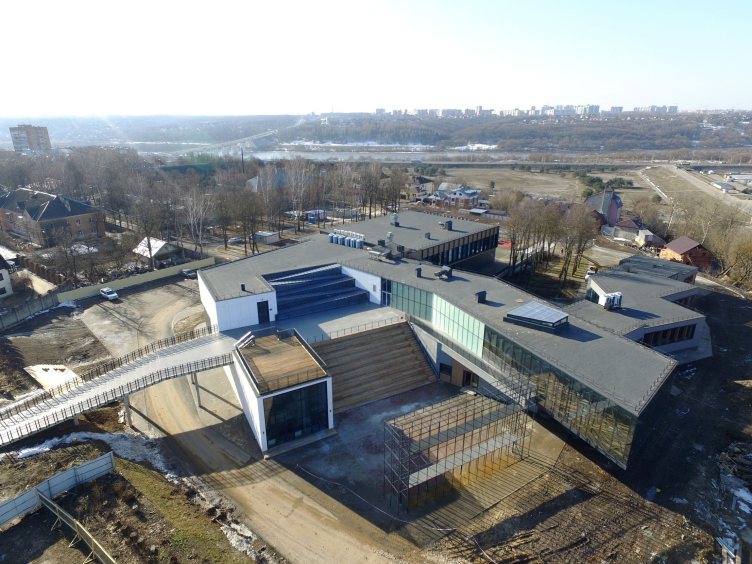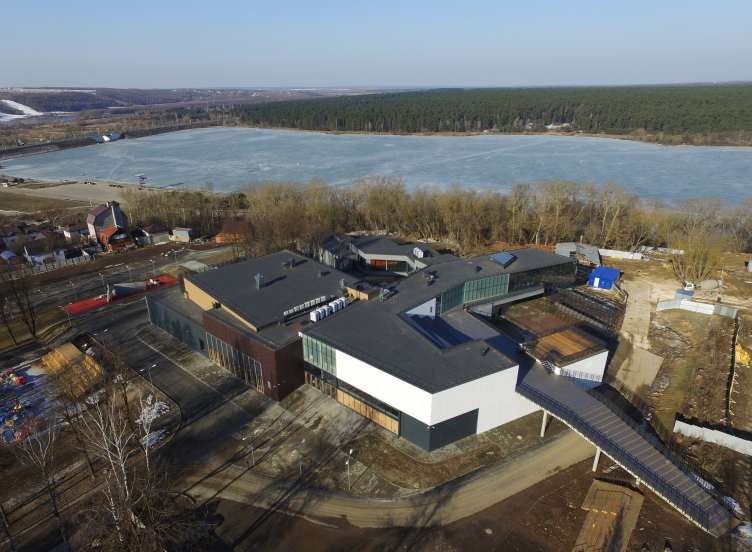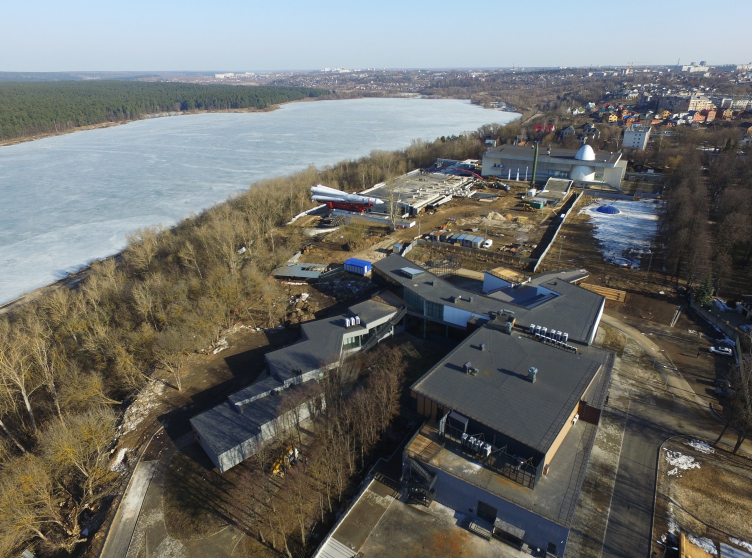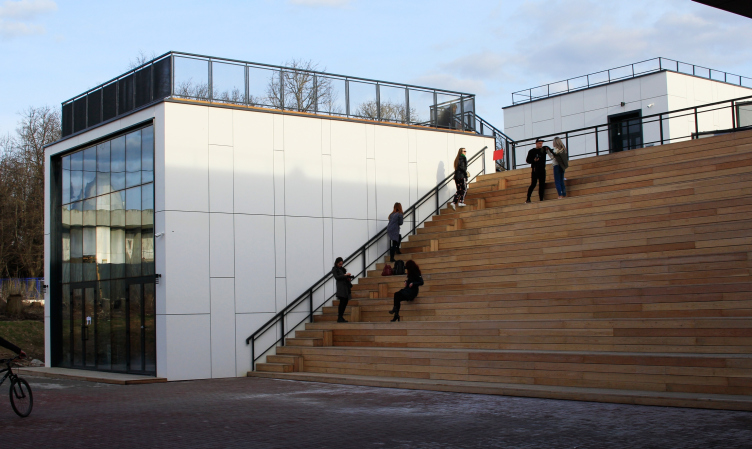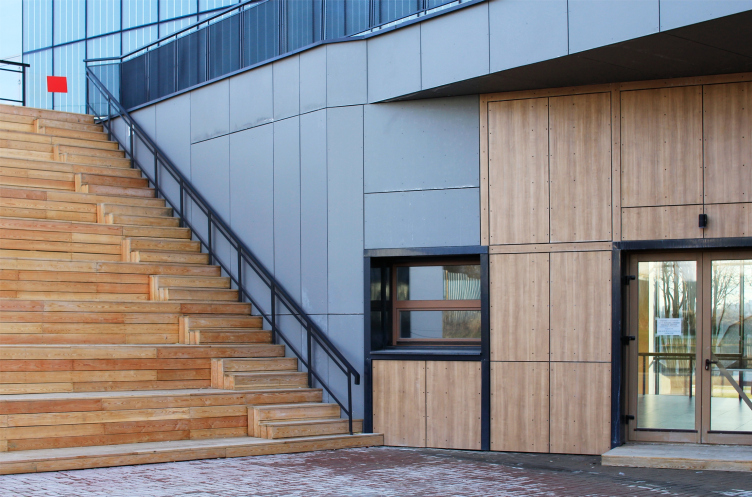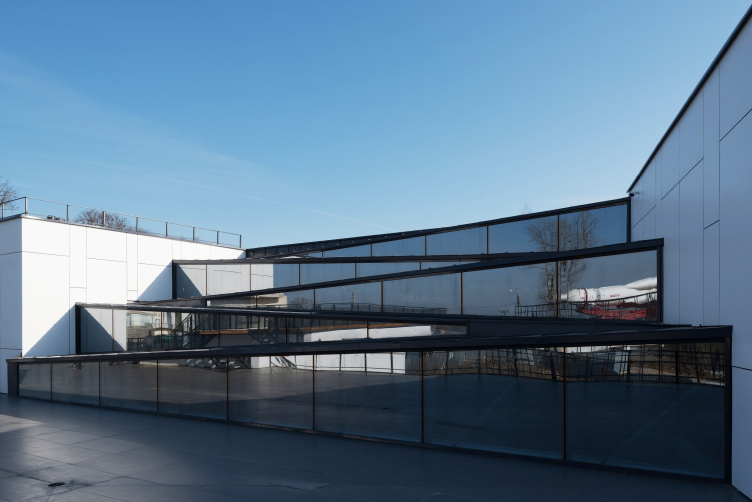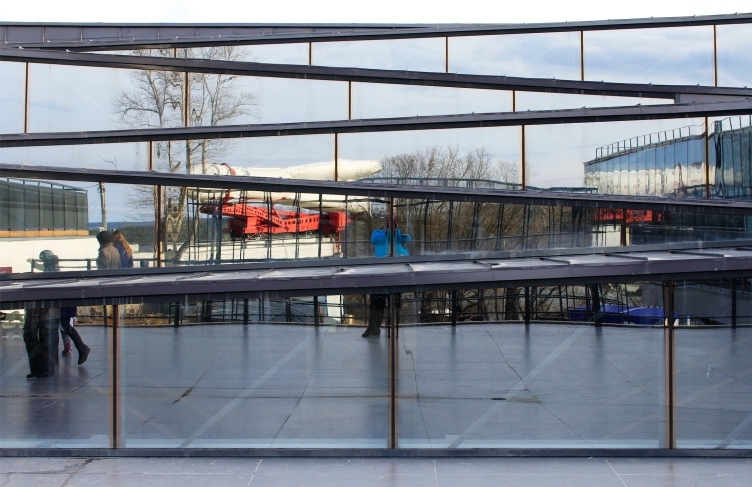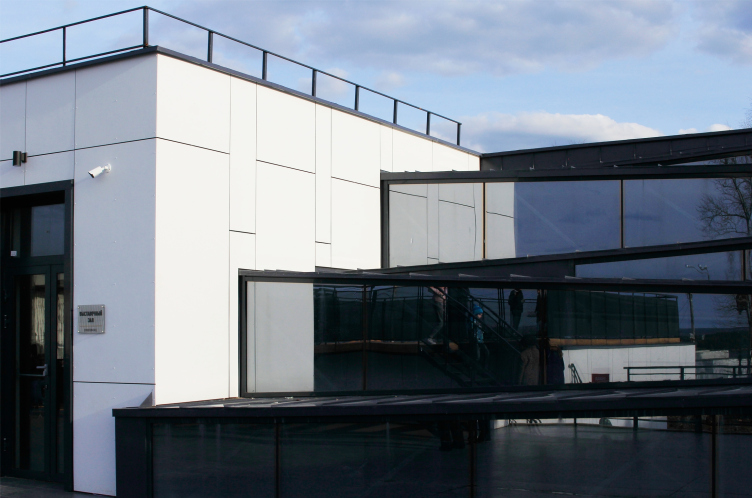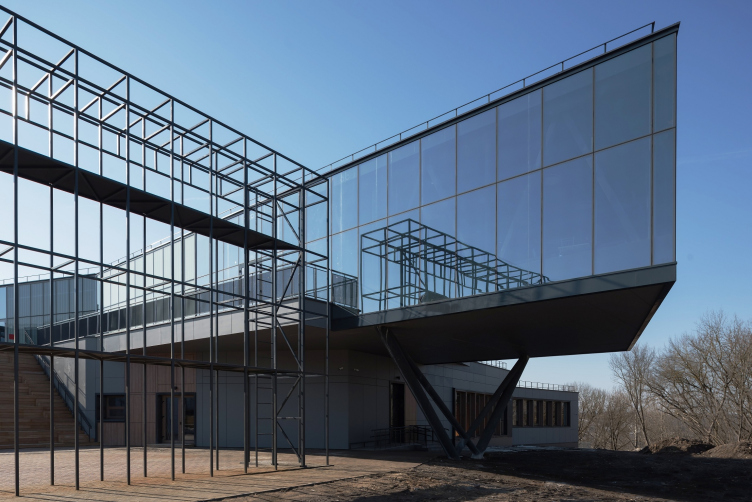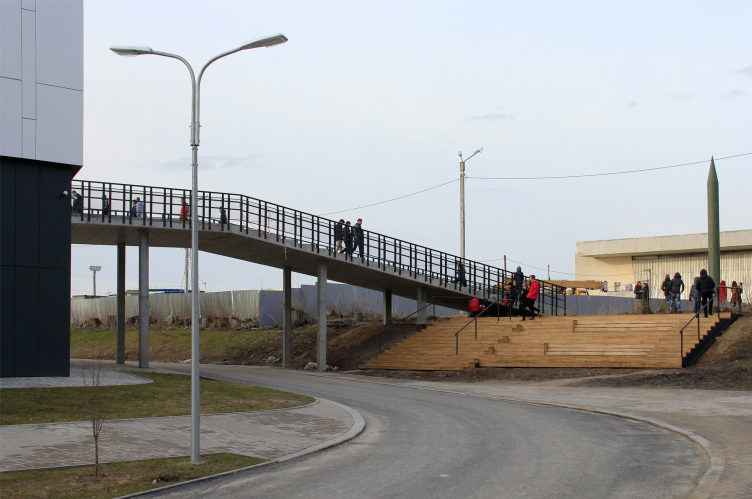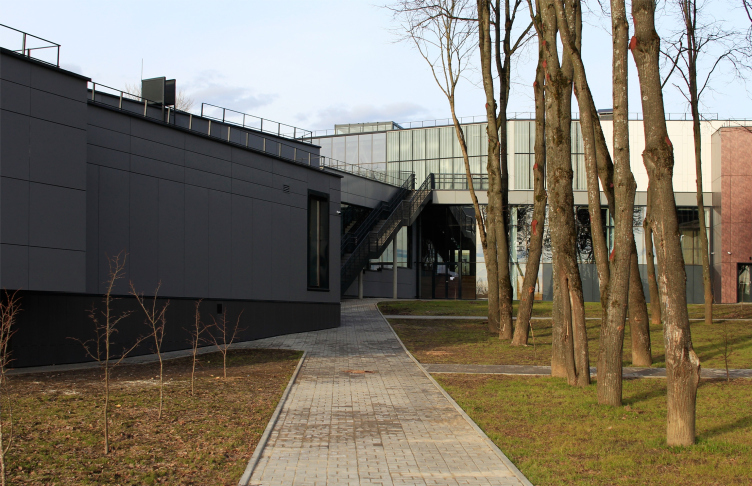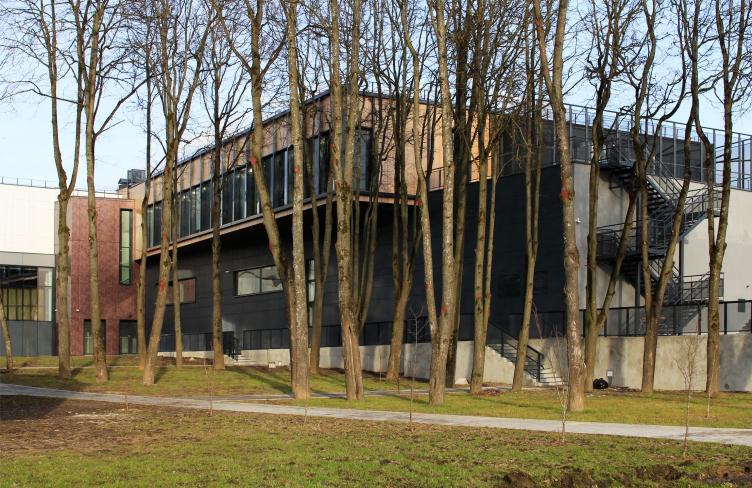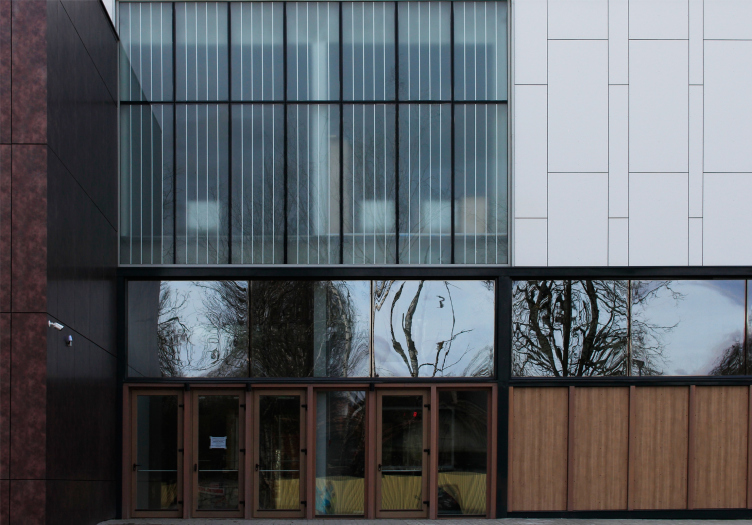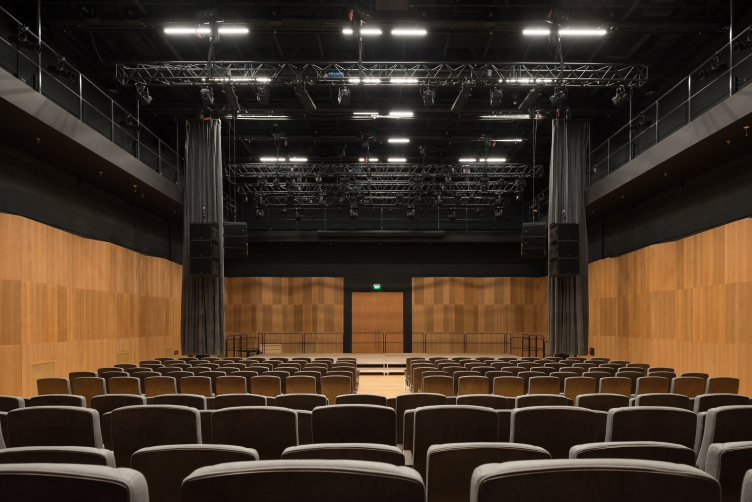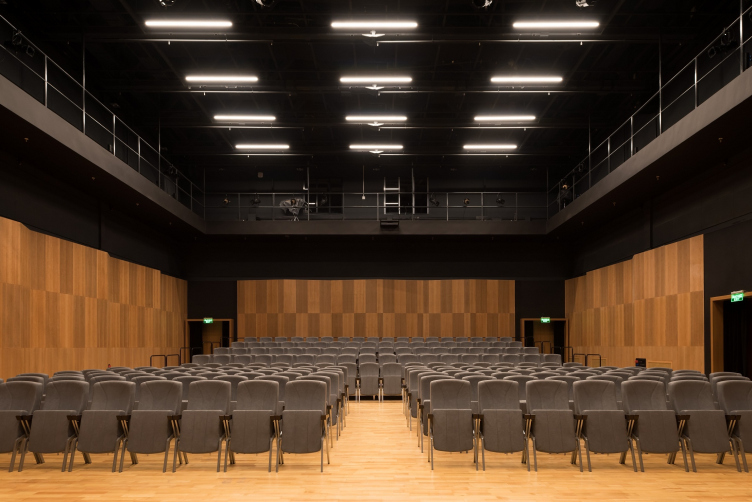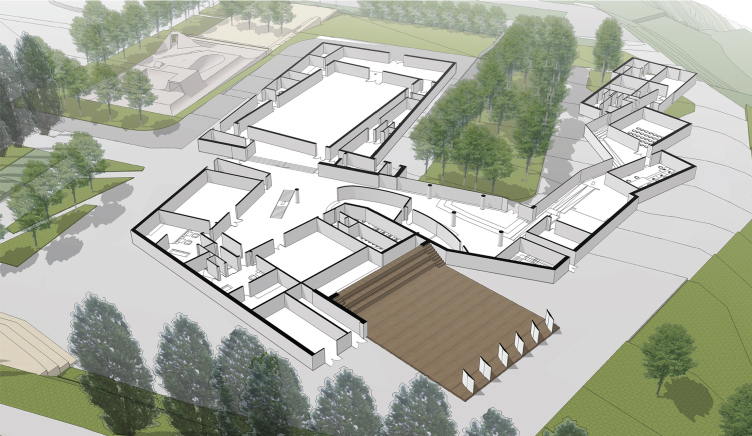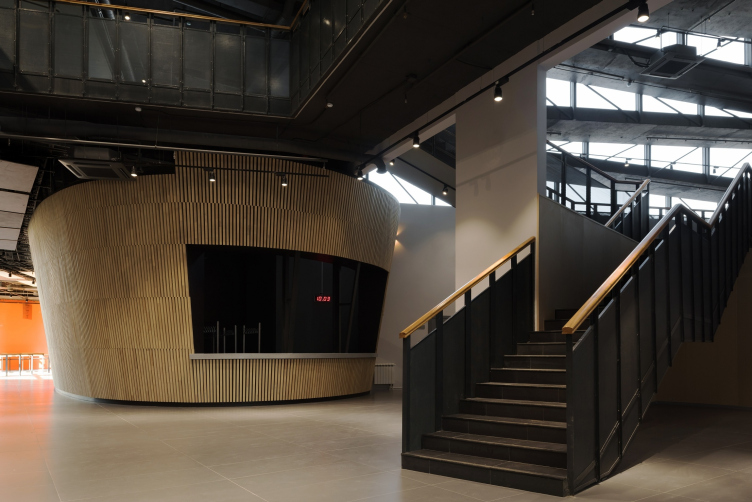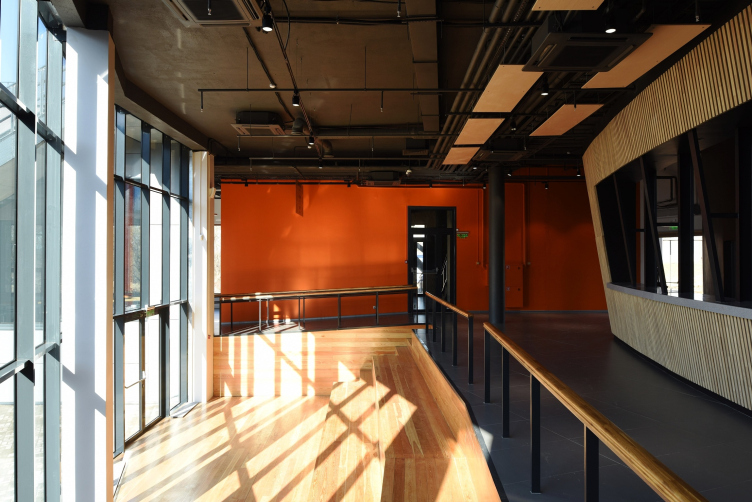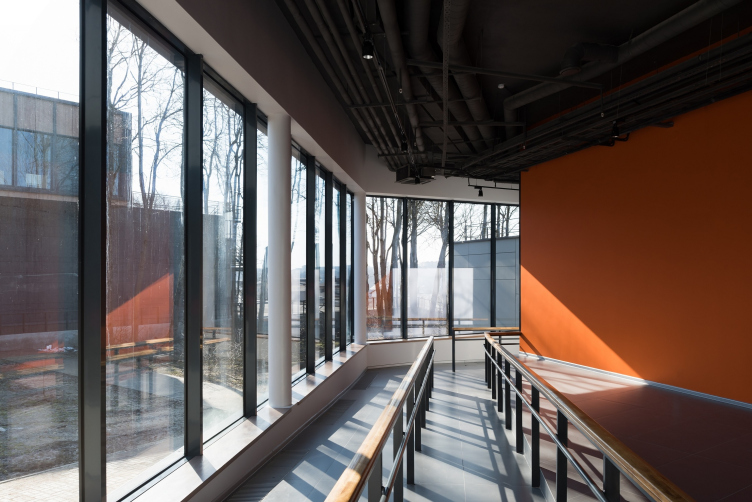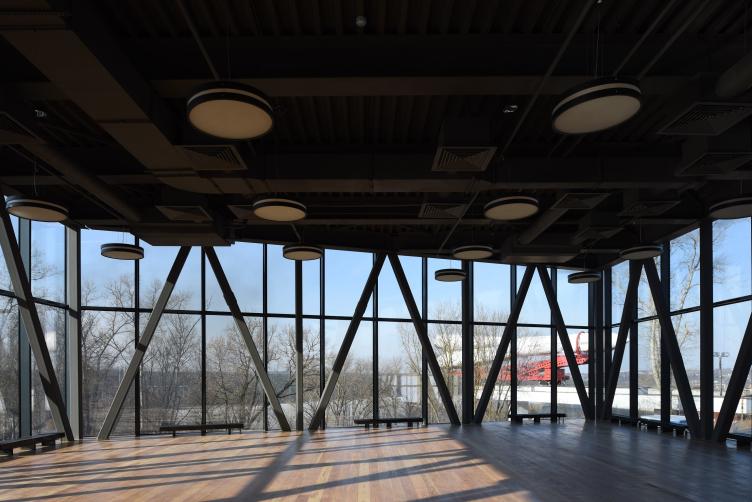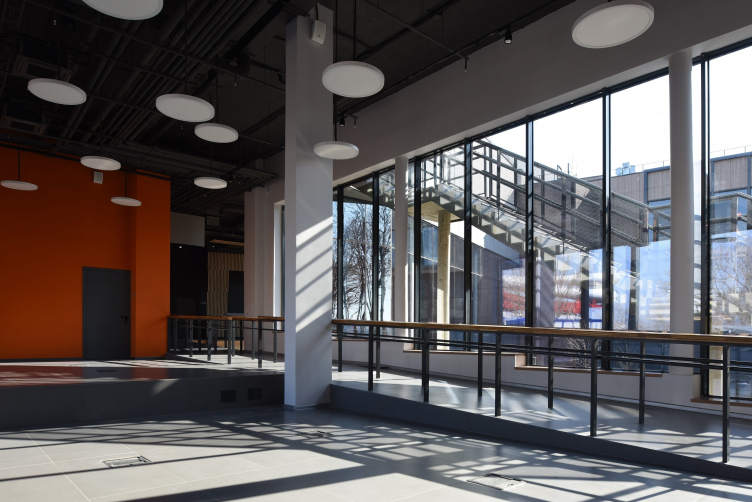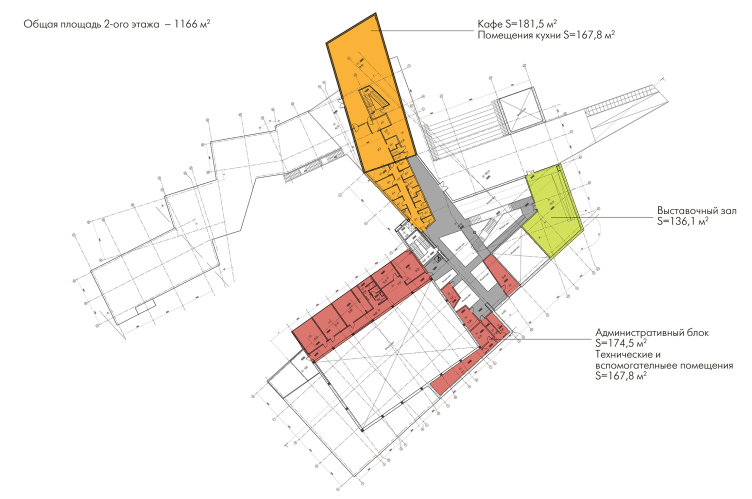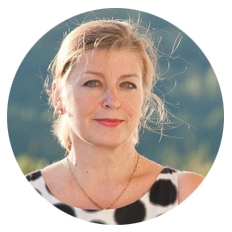The recent narrative of creating innovation centers in Russia looks pretty controversial. Initially, they were called DNK (standing for “dom novoy kultury”, translated as “house of new culture”) and were supposed to become part of a single network with the central hub in Skolkovo in order to expose regional youth to modern technology and art of today. Then the program was curtailed down to three centers: in Kaluga, Pervouralsk, and Vladivostok. And then, in 2015, the deputies of the State Duma proposed to turn these centers into patriotic ones that would foster patriotic feelings without any obscure “innovations”.
The afore-mentioned political metamorphoses were taking place when Wowhaus already got down to designing the center. However, the architects were still able to design a building that had a diverse set of functions and was easily transformable. From one end, it starts with a modern dance hall followed by a foyer, a lecture and a conference hall, and laboratories, while at the other end it ends in a muffle furnace. In other words, the very structure of the center inadvertently repeats the trajectory of the development of the idea of Innovation and Culture Centers over the last few years.
The land site on which the Innovation and Culture center is situated adjoins the Tsiolkovsky Park – the territory of the Museum of the History of Cosmonautics, a landmark built in the 1960’s by the architect Boris Barkhin; in 1961, Yuri Gagarin, the world’s first cosmonaut, laid a five-kopeck coin into its foundation stone at the construction inauguration ceremony. Built by the architects of Wowhaus, the culture center adjoins the southwest border of the “lawn” square in front of the Cosmonautics Museum but its land site is situated lower in terms of terrain and is partially obscured from the museum by the slope.
The west slope of the center’s land site that descends down to the Yachenskoe Reservoir turned out to be potentially dangerous with landslides. The authors of the project opted out of fortifying it but solved the problem by relocating the construction load: closer to the slope, the terrain holds single-story volumes of the education part of the building. The potentially eventful parts of the building – the multifunctional hall, the rehearsal halls, and the exhibition hall – were designed in the southeast part of the territory that faces the city. The space between the light northwest wing and the large southeast one includes the avenue of lime trees that the architects decided to keep – it made an excellent green courtyard opened in the direction of the Oka River.
“The architectural idea of the building consisted in creating a knot of two intertwined space “bands”. One of them would include the educational functions, the other – the public ones. Between the bands, we inserted the outdoor areas – a yard with an amphitheater and an inner green courtyard” – says Anastasia Rychkova.
Different functions and different motion routes are indeed gathered in one “knot”. The architects designed two accesses to the building that lead to this place from two public transportation stops at the Oktyabrskaya Street. From one of them, one needs to walk diagonally through the Tsiolkovsky Park. The park is connected to the building by a ramp that is then morphed into a light concrete bridge – walking over this bridge, we find ourselves at the level of the second floor of the complex. On the right, there is a sightseeing platform that commands a “postcard” view of the Cosmonautics Museum. Further on, the yard is graced by a large wooden amphitheater. Up ahead, there is an entrance to the second level of the complex and an entrance to a cafe. On the left, there is an exhibition hall; behind it, there are ziggurat-like sloping steps of elongated stained glass windows that lighten up the foyer – a peculiar kind of saw-tooth skylights. The glass cantilever of the cafe practically hovers above the ground resting solely on a V-shaped support.
This part of the building is a public space that can be used in many ways. The Wowhaus architects are really expert at creating interesting public territories, and in this specific case they literally surrounded the entire complex with them. In addition to the major amphitheater, the architects designed three minor ones: one is inscribed into the slope left of the ramp, another separates the center from a spacious children’s playground on the city side, and still another, the smallest one, only two steps high, is situated inside the foyer with a view of the yard – it can be used as a co-working space. In addition, still lower on the slope, on the side of the Oka River, the architects organized a 200-square meter parkour spot – the only one in Russia of such kind. Thus, the territory around the building is designed for various emotional responses and kinds of activities: parkour, recreation, contemplation, and open-air theater performances. One’s impressions are constantly changing as one moves around the building.
The second access to the building is routed from the city and down the alley – the architects are planning to turn it into a new city axis. It is straight, “disciplined”, and leads to a square in front of the large parallelepiped with a wooden pylonnade “drawn” on the dark-gray façade. Here, the architects placed a multifunctional theater hall – a modern transformable theater area. It was required to this rather tall, stating at the same time, within the height restrictions – so, for this hall, which us the central nucleus of the Center, the architects chose the territory lying in the lower part of the terrain.
After the multifunctional hall, the second imposing indoor space is the foyer, part of which is occupied by a system of black metal staircases lit by steps of the saw-tooth skylights – the kind that visually continue the steps of the main amphitheater on the outside. According to the architects, the structures of the skylights are as thin as can be: the authors were able to diminish their usual half-meter thickness down to 30 centimeters. Besides the staircase, yet another thing that draws one’s attention is the oval “cocoon” of the cloakroom, clad in wooden panels.
It is easy to see that the building of the Kaluga Innovation and Culture center is by no means iconic. At some places it even gets dissolved in nature, not to mention the fact that it is quite unobtrusive of the local terrain; it looks as if it flows over the landscape. It is obvious that its newness consists in lightness, subtlety, transparency, and maybe even the already mentioned unobtrusiveness with which the building’s scenarios lead the visitor along the suggested route. This kind of newness is hard to formalize because of the absence of any definite outer shell but it is full of interesting adaptive scenarios and possibilities of changing the backdrop of the action, probably resonant with the Generation Z’s mosaic thinking or Generation Y’s desire for communication. There is little struggle and impulse about this whole idea – but lots of ways for moving and staying.
Innovation and Culture Center in Kaluga. Photograph © Ilia Ivanov
Innovation and Culture Center in Kaluga. Location plan © WOWHAUS
Museum of Cosmonautics in Kaluga. Architects: B.Barkhin, E.Kireev, N.Orlova, V.Strogy, K.Fomin, 1960-1967. Photograph © Julia Tarabarina, Archi.ru
Innovation and Culture Center in Kaluga © WOWHAUS
View from the Center towards southeast, in the direction of the Oka River. Mansions. Photograph © Julia Tarabarina, Archi.ru
Innovation and Culture Center in Kaluga.
Innovation and Culture Center in Kaluga. Photograph © Ilia Ivanov
Innovation and Culture Center in Kaluga. Photograph © Ilia Ivanov
Innovation and Culture Center in Kaluga. Photograph © Ilia Ivanov
View from the yard to the amphitheater and the sightseeing platform on the roof. Innovation and Culture Center in Kaluga. Photograph © Julia Tarabarina, Archi.ru
Fragment of the main yard. Innovation and Culture Center in Kaluga. Photograph © Julia Tarabarina, Archi.ru
Skylights above the amphitheater. Innovation and Culture Center in Kaluga. Photograph © Julia Tarabarina, Archi.ru
Skylights above the amphitheater. Innovation and Culture Center in Kaluga. Photograph © Julia Tarabarina, Archi.ru
Corner of the exhibition hall and the skylights. Innovation and Culture Center in Kaluga. Photograph © Julia Tarabarina, Archi.ru
Innovation and Culture Center in Kaluga. Photograph © Ilia Ivanov
Innovation and Culture Center in Kaluga. Photograph © Ilia Ivanov
Amphitheater above the bridge. Innovation and Culture Center in Kaluga. Photograph © Julia Tarabarina
Yard with a lime tree avenue turned towards the Oka. On the left: educational work shops. On the right: the foyer. Innovation and Culture Center in Kaluga. Photograph © Julia Tarabarina, Archi.ru
Yard with a lime tree avenue turned towards the Oka. Behind the trees one can see the northwest wall of the main hall. Innovation and Culture Center in Kaluga. Photograph © Julia Tarabarina, Archi.ru
The main entrance; reserved and diverse in textures. Innovation and Culture Center in Kaluga. Photograph © Julia Tarabarina, Archi.ru
Innovation and Culture Center in Kaluga. Photograph © Ilia Ivanov
Innovation and Culture Center in Kaluga. Photograph © Ilia Ivanov
Innovation and Culture Center in Kaluga. Plan of the first floor © WOWHAUS
Innovation and Culture Center in Kaluga. The first floor © WOWHAUS
Innovation and Culture Center in Kaluga. Photograph © Ilia Ivanov
Innovation and Culture Center in Kaluga. Photograph © Ilia Ivanov
Innovation and Culture Center in Kaluga. Photograph © Ilia Ivanov
Innovation and Culture Center in Kaluga. Photograph © Ilia Ivanov
Innovation and Culture Center in Kaluga. Photograph © Ilia Ivanov
Innovation and Culture Center in Kaluga. Photograph © Ilia Ivanov
Innovation and Culture Center in Kaluga. Photograph © Ilia Ivanov
Innovation and Culture Center in Kaluga. Plan of the second floor © WOWHAUS
Innovation and Culture Center in Kaluga. Facades © WOWHAUS


